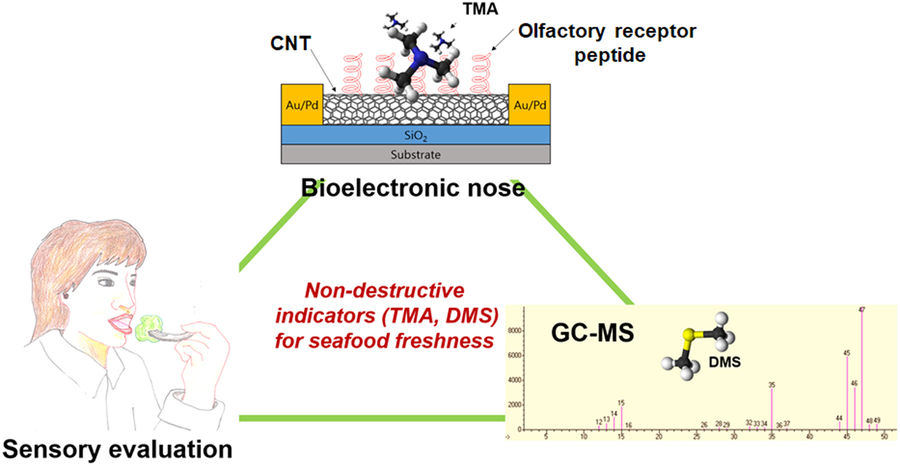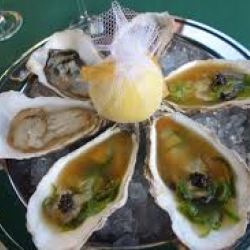Every restaurant menu I've seen lately warns that "eating raw foods can increase the risk of illness." Yet we keep eating them, especially foods such as sushi and oysters.
While fish used for sushi are typically frozen to prevent parasitic infestation, others such as oysters and clams are consumed fresh, and often raw. That can be a problem if they are contaminated with disease-causing bacteria or are held in storage too long or at the wrong temperature. Sometimes a simple 'sniff' test can tell us if the food is OK, but sometimes not, and standard means of testing for spoilage or contamination can take days.
A group of Korean researchers has used a new means of doing that detecting sooner rather than later — the new detector is called a bioelectronic nose. Led by Dr. Kyung Mi Lee, from Myongji University in the Republic of Korea, the scientists compared the ability to detect indicators of spoilage or contamination of the 'nose' with the ability of trained human testers and with classical detection techniques such as gas chromatography-mass spectroscopy (GC-MS). The comparisons are shown in the figure below.

The bioelectronic nose consists of engineered human odor receptor proteins linked to carbon nanotubes (CNT—the transducers) (full description is given here). This particular nose was designed to detect the compound trimethylamine (TMA) specifically. TMA is produced by bacteria that can contaminate oysters. For comparative purposes, the GC-MS system was used to detect another bacterial product called dimethyl sulfide (DMS), which, when present in sufficient amounts, imparts a fishy, ammonia-like odor that can be detected by the human nose*. And the trained sensory panelists evaluated the oysters on a range of characteristics such as appearance, odor, taste, texture and acceptability (dislike to swallow).
Oysters were obtained from a commercial vendor and stored at 4oC (39oF — refrigerator temperature) or at 36oC (97oF) in closed glass vials. Samples of the air space in the vials was used for the detection of TMA and DMS at serial time points up to 12 days.
It wasn't until the 6th day of storage that the panelists indicated a strong 'dislike to swallow' for the oysters, and their tasting of 'fish and pungent' flavor, an indication of the presence of DMS increased daily, as did their detection of a fish and pungent aroma. When the oysters were stored at 4oC, the GC-MS system detected DMS by day 4; when storage was at 36oC, DMS was detected at day 1. However, the electronic nose was able to detect TMA by day 2 of 4o storage, and on day 1 of 36o storage.
In other assays the investigators determined that several bacterial genera were present in the oysters used in these comparisons — including Pseudomonas, Shwanella, and Vibrio. Some of the bacteria found are capable of producing harmful toxins.
They also pointed out that although the bioelectronic nose used in this study was designed to detect only TMA, it would be possible to have such an instrument measure more than one indicator substance. Thus, use of the bioelectronic nose could turn out to be a real boon for the detection of very low levels of possibly dangerous contamination caused, perhaps, by improper or too lengthy storage.
*Note: The authors indicated that the GC-MS system wasn't sensitive enough to TMA to do a direct comparison with the nose.
Source: Kyung Mi Lee, et al. "A triangle study of human, instrument and bioelectronic nose for non-destructive sensing of seafood freshness." Scientific Reports 8, Article number: 547 (2018). Published: 11-Jan-2018. doi: 10.1038/s41598-017-19033-y

